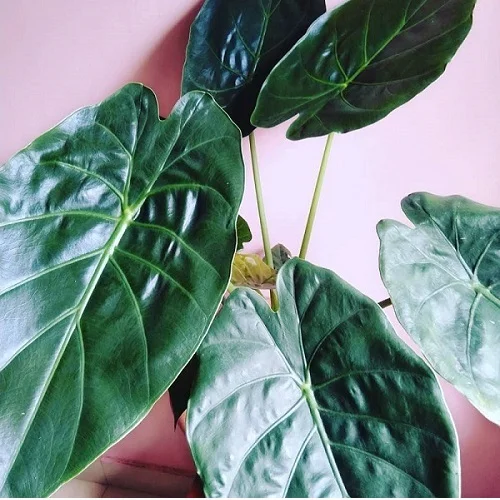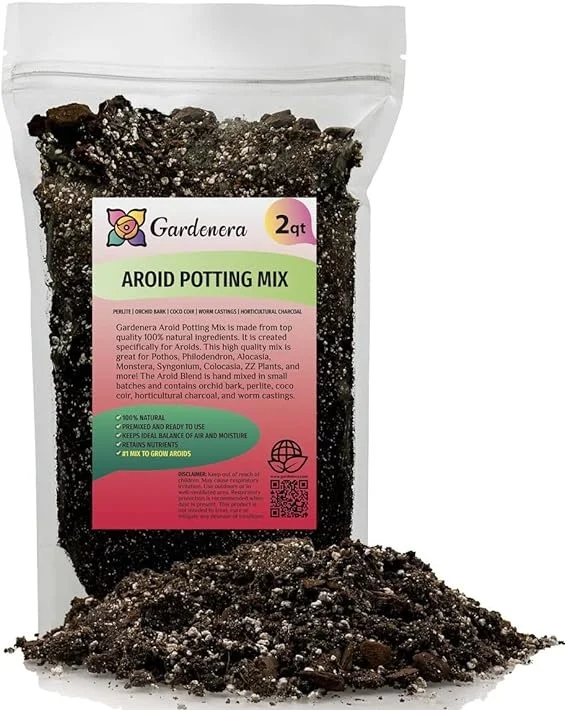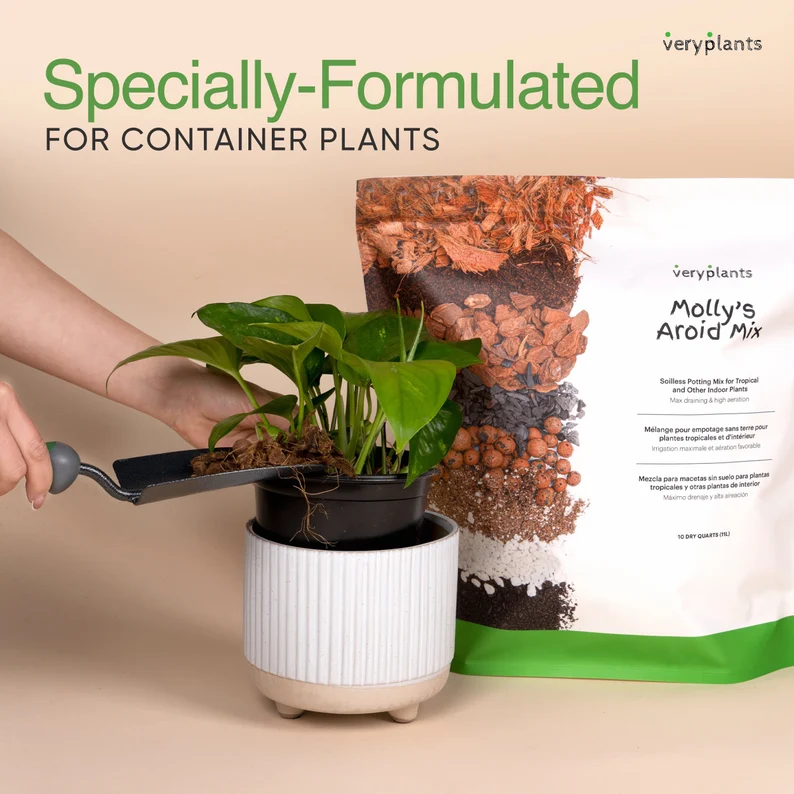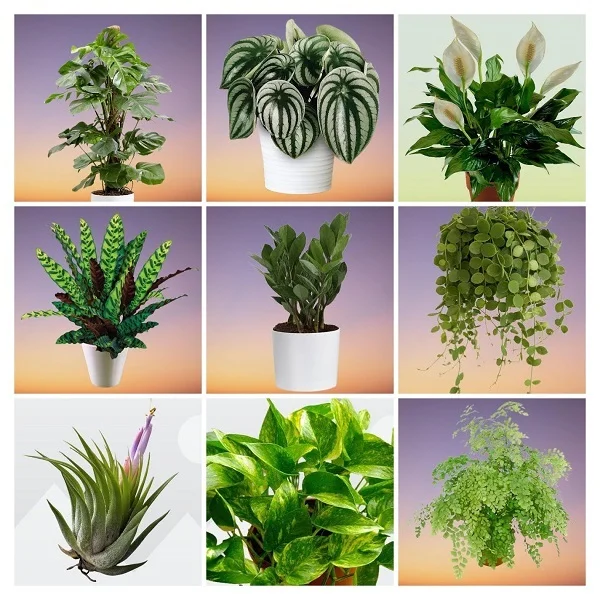Went's Hardy Alocasia (Alocasia wentii) Indoor Care, Propagation and Problems
Some links in this post may be affiliate links
Alocasia wentii (Went's Hardy Alocasia) requires bright indirect light, warm and humid conditions and moderately moist, fertile, well-drained soils coupled with monthly feeding in the growing season.
Went's Hardy Alocasia also called Hardy Alocasia, Hardy Elephant Ear, New Guinea Shield or Purple Umbrella Plant is among the popular Alocasia varieties and bears beautiful heart-shaped, glossy green leaves with prominent veins and purple-hued (metallic maroon) undersides.
Hardy Alocasia like the name suggests is more hardy than other Alocasia plants and will tolerate a wide range of growing conditions making it one of the best plants for the home due to its magnificent foliage.
The common name 'Purple Umbrella' is in reference to the purple undersides which is an adaptation to the mottled light of its native rainforest floors.

Botanical name: Alocasia wentii
Family: Araceae
Common names: Went's Hardy Alocasia, Hardy Alocasia, Hardy Elephant Ear, New Guinea Shield, Purple Umbrella Plant
Origin
Alocasia wentii has its orgins in the warm humid tropical areas of New Guinea and hence the common name 'New Guinea Shield'.
Size
New Guinea Shield is among the fast-growing plants which grows to a height of 3 feet and about 3 feet wide. The leaves can grow to 1 ft long.
Flower
The flowers in Hardy Elephant Ear are unimpressive pale-colored spathes which only last a few days. To conserve the plants energy and direct it to foliage growth, cut the flowers as soon as they appear.
Is Alocasia wentii toxic?
Yes. Alocasia wentii like other Alocasia Plants is toxic to both humans and pets as indicated by ASPCA. It contains crystals of calcium oxalate which if ingested can numb and swell the tongue and pharynx leading to difficulty in breathing and sharp pain in the throat. Keep it away from the reach of children and pets to avoid any mishaps.
Where to Buy
If you are looking to acquire the beautiful Hardy Elephant Ear Plant, you may obtain it online from Etsy (Link to Etsy).
How to care for Alocasia wentii indoors
To care for Went's Hardy Alocasia indoors, provide for bright indirect light, warmth of 15-300C, humidity of 60-70% and moderately moist, fertile, well-drained soils coupled with monthly feeding during the growing season.
Purple Umbrella Plant requires regular pruning to keep it neat and tidy as well as discourage pest and disease infestations. Repotting is only need when it becomes pot-bound. Keep reading for more on these growing conditions and how to achieve them.

Watering
Water your Alocasia wentii liberally in spring and summer while allowing the top 2 inches of soil to dry out between waterings. Maintain the soil moderately moist and avoid overwatering to prevent rotting and yellowing of leaves..
Cut down on watering in fall and winter to keep the soil barely moist but never allow the soil to dry out completely. If Went's Hardy Alocasia is underwatered, it may drop its leaves in readiness for dormancy.
Use water that is at room temperature to avoid cold shock which can lead to stunted growth. Ensure that the water is free of chlorine and other dissolved chemicals to prevent browning of leaf edges.
Do not allow the Hardy Elephant Ear to sit in soggy soil as it is prone to fungal infestations like root-rot and leaf spot diseases. Always empty the saucer after watering and ensure the pot has a drainage hole to prevent the soil from getting soggy.
Light Requirements
Alocasia wentii grows best in bright indirect light (filtered light). Keep it away from direct sunlight as it can lead to brown sunscorch marks on the leaves.
Too little light will signal dormancy to the plant which may cause the leaves to start dying in readiness for dormancy. Where natural lighting is not adequate, consider investing in grow lights to supplement it.
Turn the pot regularly to ensure that the plant receives light on all sides for even growth.
Temperature & Humidity
Alocasia wentii flourishes in an average warmth of 15-300C. Below 130C, the plant may drop all its leaves and go into dormancy stage. Keep it away from frost and drafts as it hates sudden changes in temperature.
Went's Hardy Alocasia thrives in a humidity of 60-70%. To elevate humidity, set the pot on a wet pebble tray or grow it in a well-lit bathroom and other moist areas in the home. Ensure that there is good air circulation to minimize fungal diseases.
Potting Soil
The best soil for Alocasia wentii is a rich, well-draining soil to prevent it from getting soggy while providing the required nutrients. Most potting mixes designed for Aroids are ideal for these plants.
Fertilizer
Feed Alocasia wentii with a balanced, liquid fertilizer every 4 weeks in spring and summer for lush growth. Withhold feeding in fall and winter as the plant undergoes dormancy during this period and growth is minimal at this time.
Flush out accumulated salts arising from fertilizers every 2-3 months by running a stream of water through the soil until the water comes out through the drainage holes. Let the stream of water run for a few minutes.
Repotting
Alocasia wentii prefers to be root-bound, therefore frequent repotting is not needed. Avoid frequent repotting as the plant can take upto 4-6 weeks to recover from repotting shock.
Repot into a 1 size larger pot during the growing season only if the roots have grown out through the drainage holes.
Make sure that the pot has a drainage hole to prevent the soil from getting soggy as it can lead to fungal infestations. Take a look at these ceramic planters with drainage hole on Amazon.
Pruning & Grooming
Pruning Alocasia wentii is easy as it only requires removal of yellow and diseased leaves as they occur to maintain the plant neat and to minimize chances of diseases and pests infestation.
Remove the leaves by cutting at the base with a sterilized knife or pair of scissors to avoid disease transimission. Take care not to injure the new leaves that are forming.
Occasionally clean the leaves by damp wiping them with a soft cloth to get rid of dust and discourage pests infestation.
Alocasia wentii Propagation
Alocasia wentii is propagated by plant division at the beginning of the growing season (spring to early summer) when in active growth.
Propagating Alocasia wentii by plant division
- Thoroughly water the plant at least one day before to make it easier to divide and also hasten establishment as a well hydrated plant suffers less shock and takes a shorter time to take root.
- Carefully slip the plant out of its pot and gently divide the rhizome into sections by cutting through with a sharp sterilized knife. Ensure that each section has 1-2 stems.
- Select small pots that have a drainage hole to prevent the soil from getting soggy as it can lead to rotting. Ensure the pots are slightly wider than the base of the rhizome sections.
- Fill the pots one thirdway with well-draining soil and moisten it slightly.
- Position each section in the center of the pot and continue to fill with the soil while firming the soil around the base. Maintain the sections at the same depth that they were in the previous pot.
- Place the set up in a warm, well-lit place away from direct sunlight to prevent scorching.
- Maintain the soil moist until new growth emerges after which you can begin routine care.

Alocasia wentii Problems & Remedies
Went's Hardy Alocasia problems are drooping leaves & plant dying, yellowing leaves, brown leaves, brown leaf tips & edges, loss of leaf color, pests and diseases. Keep reading for more on these problems and how to fix them.
Drooping leaves & plant dying
Alocasia wentii is drooping leaves and dying due to too little light, cold drafts or underwatering. These three reasons signal dormancy for the plant and hence the leaves die in readiness to enter dormancy.
Naturally, this happens during winter when the plant undergoes dormancy. However, even if the foliage may die, the underground rhizome is still alive and can regrow under favorable conditions.
How to fix it
Too little light: Move the plant to a brighter spot where it will receive bright indirect light or instal a grow light if the natural light is insufficient.
Cold temperatures: Keep it away from cold drafts to maintain a warmth of 18-300C.
Underwatering: Water when the top 2 inches of soil dry but do not allow the soil to dry out completely.
Yellow leaves
Some of the causes of yellowing leaves on your Went's Hardy Alocasia are dry air, inconsistent watering, soggy soil and aging. Remove such leaves by snipping them off at the base with a clean sharp knife or a pair of scissors.
How to fix it
Dry air: Set the pot on a wet pebble tray, group the plants together, use a humidifier or grow the plant in a well-lit bathroom.
Inconsistent watering: Water only when the top 2 inches of soil dry out. Do not water on a schedule.
Soggy soil: Use well-draining soil and a pot that has a drainage hole.
Aging: It is natural for the old leaves to turn yellow and drop as the plant matures.
Brown leaves
The main causes of brown leaves on your Alocasia wentii are inconsistent watering, soggy soil, and temperature stress.
How to fix it
Inconsistent watering: Do not water on a schedule. Water when the top 2 inches dry out. Do not allow the soil to dry out completely.
Soggy soil: Use a pot with a drainage hole and well-draining soil.
Temperature stress: Keep the plant away from drafts emanating from AC units, drafty windows, heat sources, windy doors among others.
Brown leaf tips & edges
Brown leaf tips & edges on Alocasia wentii are due to dry air, salts buildup or underwatering.
How to fix it
Dry air: Set the pot on a wet pebble tray, use a cool mist humidifier or group the plants together.
Salts buildup: Flush out the accumulated salts from the soil every 2-3 months by running a stream of water through the soil until the water comes out through the drainage holes.
Underwatering: Water when the top 2 inches of soil feel dry but not leave the soilball to dry out completely.
Loss of leaf color
Loss of leaf color on Alocasia wentii is due to either too little or too much light.
How to fix it
Too little light: Position the plant in a brighter spot and ensure it receives medium to bright indirect light or instal a grow light if the natural light is inadequate.
Too much light: Move the plant to a more shaded spot or instal a light curtain to filter the light.
Pests
Common pests on Alocasia wentii are mealybugs, spider mites, scale insects and aphids.
How to fix it
- Isolate the affected plant to prevent further spread to other plants.
- Treat the infested plant with neem oil or insecticidal soap as recommended by the manufacturers.
- Check underneath the leaves regularly for these pests and take timely control measures.
- Regularly damp-wipe the leaves with a soft cloth to discourage the pests.
- Keep the plant well pruned to minimize the hiding and breeding places for these pests.
Diseases
Alocasia wentii is prone to leaf spot disease which is enhanced by soggy soil and overwet conditions. The disease presents as dark brown or black leaf spots.
How to fix it
- Remove and burn the affected parts to reduce the risk of spread to the rest of the plants.
- Spray the affected plant with a systemic fungicide and ensure to cover all the parts with the fungicidal solution.
- Keep the plant on the dry side, do not mist it and ensure good air flow.
- Use a pot with a drainage hole and well-drained soil.
You liked it? Share on social media.
Related Content
Amazon Associates Disclosure
Homeplantsguide.com is a participant in the Amazon Services LLC Associates Program, an affiliate advertising program designed to provide a means for sites to earn advertising fees by advertising and linking to amazon.com.





